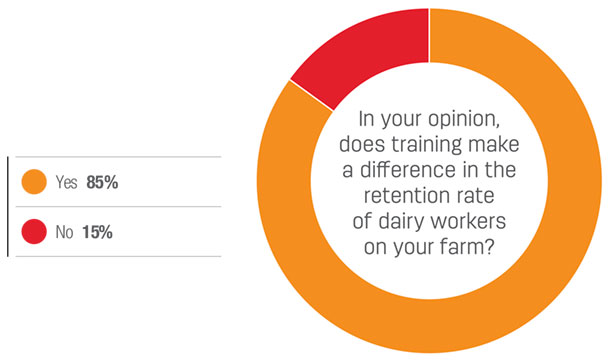After more than 1,800 votes were cast online, it’s clear dairies do agree. In an online poll conducted since 2018, we asked readers the following question: In your opinion, does training make a difference in the retention rate of dairy workers on your farm? Eighty-five percent are in agreement that it does.
I was pleasantly surprised by the results. The inclusion of the phrase “on your farm” was intended to make the question less hypothetical and more realistic. An interesting follow-up survey would be to ask if farms change the frequency of training to specifically increase retention rates. I’d hypothesize the answer is no. It’s a side benefit. But the acknowledgement from dairy farmers that retention is one of the rewards of training beyond improved human safety, animal welfare or production efficiency is an interesting finding.

At the recent 2019 Western Dairy Management Conference in Reno, Nevada, Robert Hagevoort and Noa Roman-Muniz suggested how training is typically used on dairies: “Historically, dairy worker training has been offered as a way to fix problems … the ‘putting out a fire’ approach to training sends the wrong message to workers. Instead, training interventions should be supported by middle and upper management … and continuous opportunities for employee engagement and growth.”
The Inc. article asserts that training should be “investment No. 1.” That’s a significant claim given all the opportunities for investment that exist for businesses today. However, employees offered training are less likely to leave and feel obligated to employers who invest in them, according to the article.
“The company with the best training wins,” the article states.
When milk margins are low, training is one way to get more out of the same resources. Training could also increase the likelihood employee turnover-related costs stay lower too. ![]()

-
Walt Cooley
- Editor-in-chief
- Progressive Dairyman
- Email Walt Cooley








